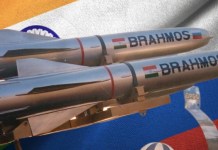The Indian Army is planning to get a new ally to counter stone-pelting and terror attacks in the Kashmir Valley. Robots engaging the front with weapons may still be a far-fetched thought, but India doesn’t want to fall behind in providing its armed forces with the latest equipments with Artificial Intelligence (AI).
Malaysian PM Mahathir Mohammad Chief Guest at Pakistan Day Parade
The Centre for Artificial Intelligence (CAIR) is on its way of developing Multi-Agent Robotics Framework (MARF)—which could be employed in scenarios like the Pathankot Attack—capable of undertaking various military operations.
According to reports, Robotic weapons could be introduced by the Defence Ministry in the Indian Army which will help security forces in counter-insurgency as well as counter-terror operations. These robots are designed to be capable of lobbing grenades, overcoming obstacles, and carrying out search-and-rescue raids.
Can China’s Robotic Submarines Match the US Naval Might in the South China Sea?
In an interview to Livemint, one of the officials stated “The Defence Ministry is looking for around 550 robotic surveillance units, each with a 25-year lifespan. These robots should be capable enough for water fording with minimum 20cm depth.”
The Centre for Artificial Intelligence and Robotics (CAIR), a Defence Research & Development Organisation (DRDO) lab heading India’s research in artificial intelligence, has been working on this plan for more than eight months now and when completed, it will equip India’s armed forces with an army of robots that can work as a team in cooperation.
As claimed by the sources, “Apart from gathering imagery intelligence, the unmanned vehicles will be armed and capable of firing suitable munitions at the intended target, for example, throwing grenade at places where the terrorists are holed up.”
Rohingya Muslims Big Threat To Indian Defense Installations In Jammu & Kashmir
The force would use these robots in built-up areas, residential and commercial areas for gathering real-time intelligence inputs prior to movement of troops. Moreover, it would be light-weight, rugged, portable and at the same time shockproof to withstand firing or attacks from terrorists.
With this aid to the defence machinery systems, the Indian army is expected to perform more efficiently, However, the full potential of robotic combat in real-life battle situations is still to be tested.





